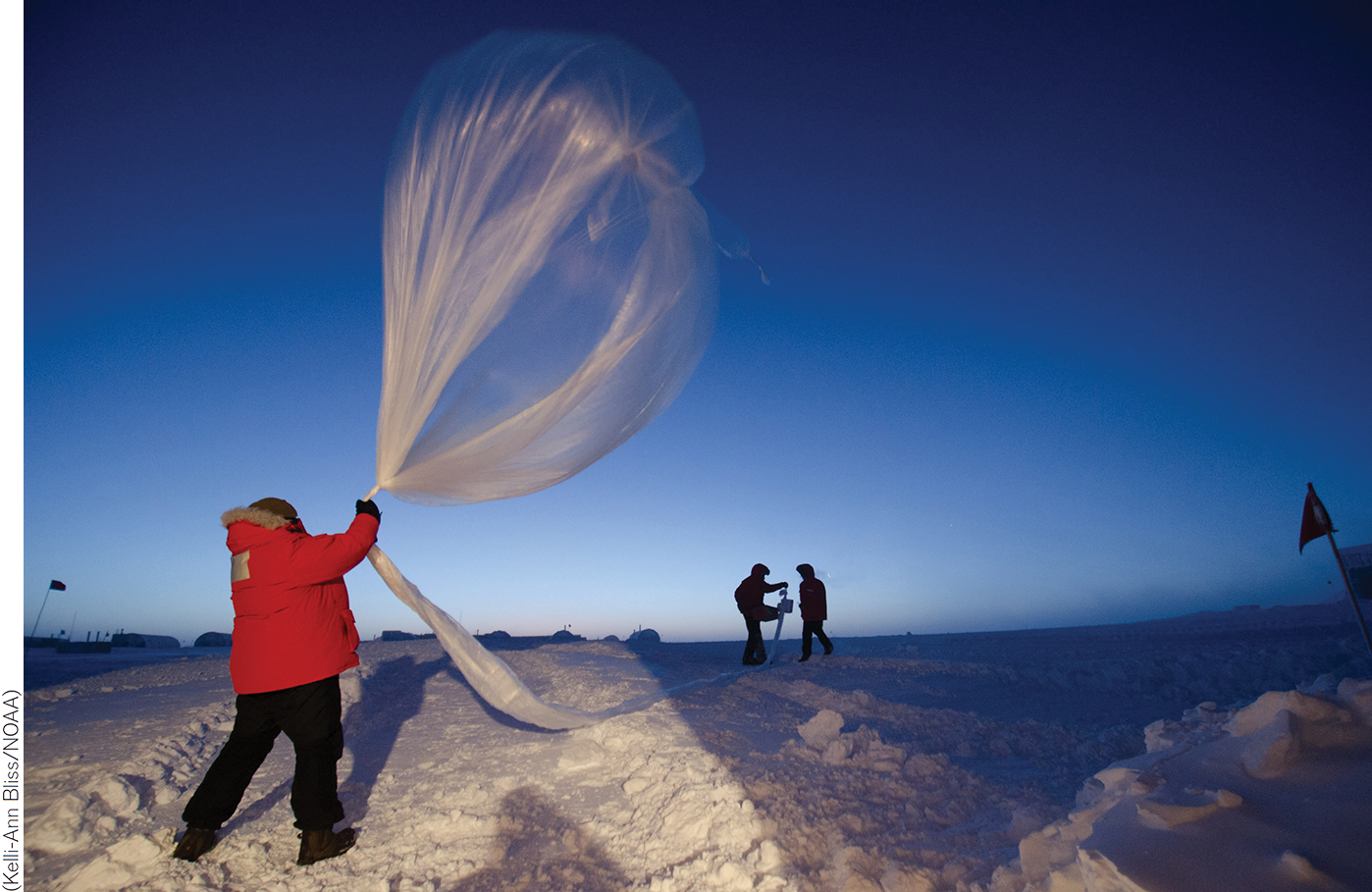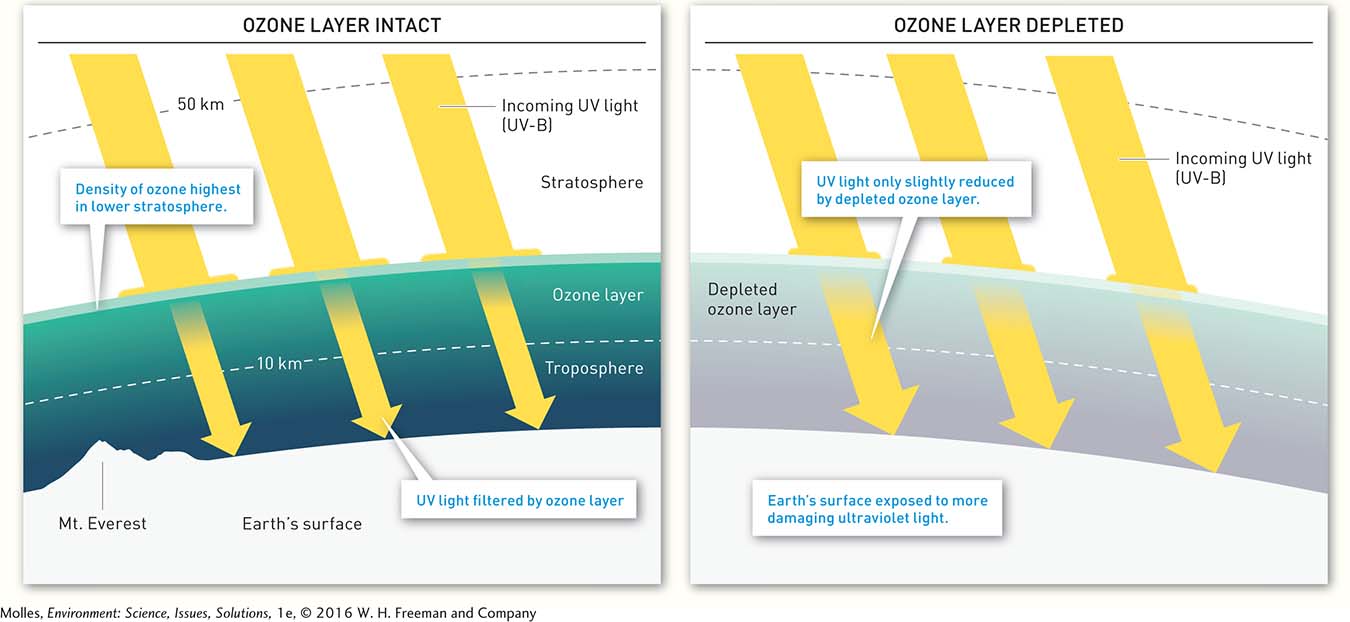Chapter Introduction
1
CHAPTER 1
Introduction

Central Question: How do science and values help address environmental issues?
 SCIENCE
SCIENCE
Explain what makes up the environment, what science is, and how science can address uncertainty.
 ISSUES
ISSUES
Analyze the global environmental impact of humans.
 SOLUTIONS
SOLUTIONS
Discuss how personal views affect how we address environmental problems and the goal of sustainability.
A Growing Impact
2
With the discovery of a hole in the ozone layer, the impact of a growing human population became more apparent than ever.

Polar bears are drowning in the Arctic Ocean! The Amazonian rain forest is being cleared for soybeans and cattle ranches! Another oil well has blown out in the Gulf of Mexico! It seems that every day a new and shocking environmental tragedy appears in the headlines. Environmental activists argue that we’re one step away from apocalypse, while politicians and businessmen hem and haw about the true impact of these kinds of events and who bears responsibility.
Amid heated debates over the most pressing environmental issues of the 21st century, it’s sometimes difficult to separate the science from spin. Are people who deny that humans are changing the climate honestly questioning the evidence or are they seeking to delay action? And do environmental activists ever consider the impact that restrictive environmental regulations would have on the economy and the livelihoods of people?
ozone A molecule made up of three oxygen atoms; considered a pollutant in the lower atmosphere, but in the upper atmosphere it shields against potentially harmful rays from the Sun.
ultraviolet (UV) light Shorter-
As we shall learn in this text, such controversies and philosophical dilemmas over environmental issues are nothing new. In fact, it may be easier to understand the current debates around climate change and offshore oil drilling by looking deeply at one of the most frightening news headlines in the recent past: “Hole Found in Earth’s Atmosphere!” The year was 1985 and British researchers working in the Antarctic had measured a major reduction in ozone levels in the upper atmosphere. Ozone, a molecule made up of three oxygen atoms, is considered a pollutant in the lower atmosphere, but it performs a critical role in the upper atmosphere, shielding against potentially harmful ultraviolet, or UV, light from the Sun.
3
“Science cannot resolve moral conflicts, but it can help to more accurately frame the debates about those conflicts.”
Heinz Pagels, physicist and science writer, Dreams of Reason: The Computer and the Rise of the Sciences of Complexity (1988)
Ultraviolet light, which has shorter wavelengths and higher energy than visible light, can damage living tissue, as anyone who has ever been sunburned knows. Consequently, an ozone hole would lead to problems in human health, such as increased incidence of skin cancer and cataracts, agricultural problems, such as damage to crops, and ecological problems, such as harm to the abundant marine life around the Antarctic. Although the evidence for the ozone hole was debated for years, the science was eventually settled, and governments took action to solve the problem. The ozone hole tapped into deeper fears about how the activities of humans may be impacting the environment, foreshadowing many of the challenges we’re faced with today.
The depletion of Earth’s ozone layer was not the first sign of human impact on the environment. However, it was a clear and dramatic indication that human impact had achieved truly global proportions. Immediately, questions swirled around the discovery. What had produced the hole in Earth’s protective shield? How serious was the situation and could anything be done to repair the protective ozone layer? Addressing these questions would require contributions from the fields of science, medicine, communication media, politics, international diplomacy, national and international law, and many more. Addressing the unresolved environmental issues in the early 21st century will inevitably require the application of not only science, but also human values. As we explore the central question of Chapter 1, we’ll return repeatedly to the example of the ozone hole because it reveals the entire process of how science shapes our societies.
Central Question
How do science and values help address environmental issues?